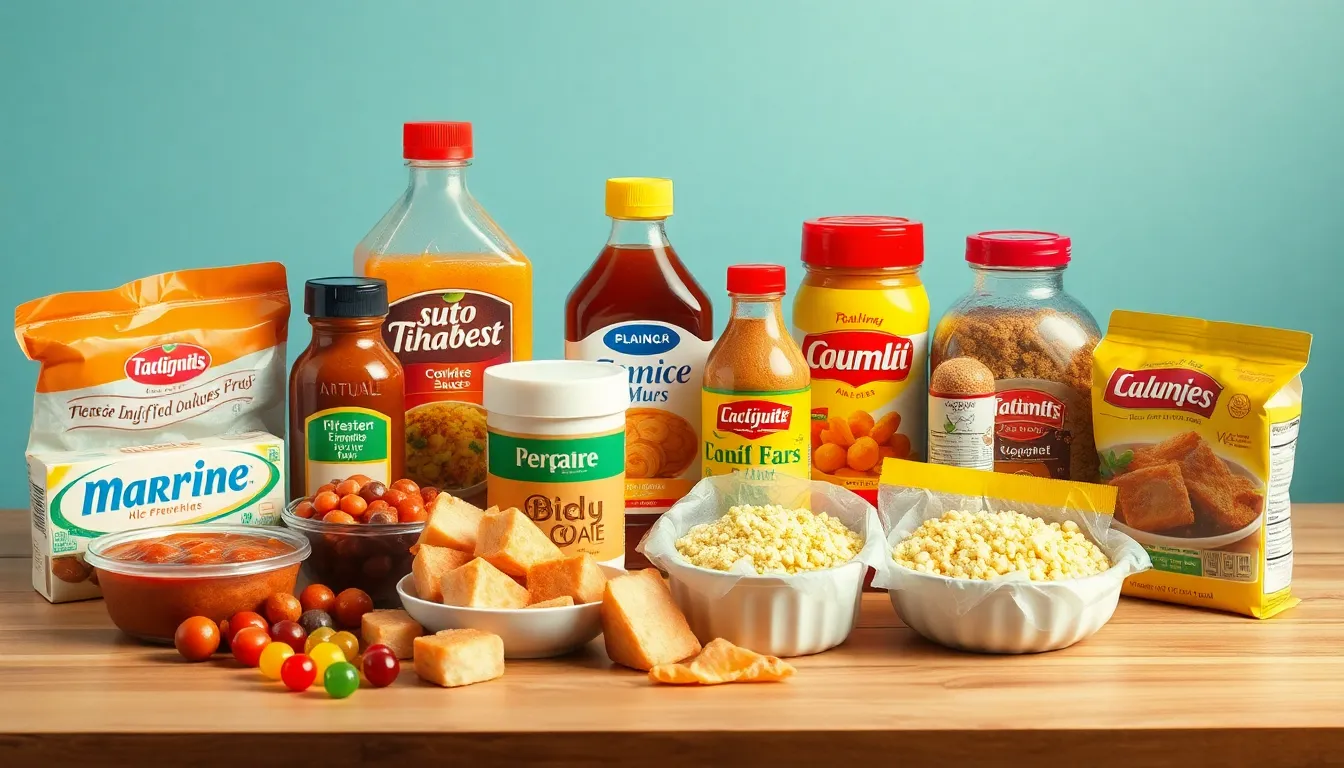In the world of food additives, dimethylpolysiloxane stands out for its unique properties and widespread use. Often found in processed foods, this silicone-based compound serves various roles—from preventing foaming in frying oils to enhancing the texture of baked goods. As consumers become more conscious of what they eat, understanding the implications of such additives is essential.
While dimethylpolysiloxane is generally recognized as safe by regulatory agencies, questions about its long-term effects and potential health risks continue to emerge. With its prevalence in everyday products, it’s crucial to explore how this ingredient impacts food quality and consumer health. This article delves into the uses, benefits, and concerns surrounding dimethylpolysiloxane, shedding light on a compound that’s as fascinating as it is controversial.
Dimethylpolysiloxane in Food
Dimethylpolysiloxane is a synthetic compound classified as a silicone-based polymer. It’s widely used as a food additive in various processed foods. Functions of dimethylpolysiloxane include preventing foaming in frying oils, enhancing the texture of baked goods, and acting as an anti-caking agent in dry products.
Dimethylpolysiloxane features a flexible and stable molecular structure, which imparts unique properties. Its low surface tension and lubricating qualities make it effective in reducing surface tension, thereby minimizing bubbles in oils during frying. Common applications include its use in margarine, emulsified sauces, and confectionery products.
Regulatory agencies such as the U.S. Food and Drug Administration (FDA) and the European Food Safety Authority (EFSA) categorize dimethylpolysiloxane as generally recognized as safe (GRAS) when used according to established guidelines. These evaluations reflect its low toxicity and minimal adverse effects on human health.
Ongoing discussions exist around the long-term implications of consuming foods containing dimethylpolysiloxane. Critics express concern over potential accumulation in the body and uncertainties regarding its metabolic effects. Despite this, scientific research largely supports its safety in food applications.
Awareness of dimethylpolysiloxane has increased among consumers, leading to questions about its presence in food products. As a result, many manufacturers are now disclosing its use on packaging labels, assisting informed consumer choices.
Uses of Dimethylpolysiloxane in Food

Dimethylpolysiloxane serves various functions in the food industry, offering both functional and quality benefits in processed foods.
Food Additive Functions
Dimethylpolysiloxane acts primarily as an anti-foaming agent in frying oils, effectively reducing surface tension and preventing bubbles. It stabilizes emulsions, improving the texture of baked products and sauces. Moreover, it serves as a coating agent that enhances product stability during storage, prolonging shelf life. By minimizing clumping, it functions as an anti-caking agent in dry food substances, ensuring consistency and ease of use. These additive roles contribute significantly to the overall quality and appeal of food products.
Common Food Products Containing Dimethylpolysiloxane
Dimethylpolysiloxane is present in a variety of food items, including margarine, where it aids in texture and spreadability. It appears in emulsified sauces like salad dressings, providing stability and preventing separation. Additionally, it’s found in confectionery products such as gummies and soft candies, enhancing mouthfeel and prolonging freshness. The compound also plays a role in processed cheeses and instant food mixes, helping maintain desirable qualities during preparation and storage.
Safety and Regulatory Status
Dimethylpolysiloxane’s safety and regulatory status reflects its approval for use in food products by key health authorities. Regulatory agencies ensure its minimal risk when applied according to established guidelines.
FDA Regulations
The FDA classifies dimethylpolysiloxane as generally recognized as safe (GRAS). This classification allows its use at regulated levels, primarily in processed foods, without the need for pre-market approval. The FDA stipulates specific conditions for its application, ensuring that food manufacturers adhere to safety protocols. In this regulatory framework, manufacturers must also monitor their usage to maintain compliance with safety standards.
Health Concerns and Studies
Some scientific studies raise questions about the long-term health effects of dimethylpolysiloxane, particularly regarding potential accumulation in human tissue. Research indicates minimal toxicity and supports its safety in food applications. Investigations have not uncovered significant adverse health effects in humans when consumed within regulated limits. Ongoing research seeks to address lingering concerns and provide clarity on its metabolic behavior in the body, contributing to the broader understanding of its safety in food products.
Benefits of Dimethylpolysiloxane in Food
Dimethylpolysiloxane offers several advantages in food production, enhancing quality and longevity. Key benefits include improved food texture and shelf life extension.
Improved Food Texture
Dimethylpolysiloxane contributes to a smoother and more appealing texture in various food products. It acts as a stabilizer, ensuring that emulsions remain uniform and do not separate. This property enhances the mouthfeel of items such as dressings and sauces. Its ability to reduce surface tension also minimizes foaming during cooking, producing consistent textures in fried and baked goods. Additionally, it contributes to the elasticity and spreadability of spreads like margarine, elevating the overall consumer experience.
Shelf Life Extension
Dimethylpolysiloxane plays a significant role in extending the shelf life of food products. As an anti-foaming agent, it reduces the formation of bubbles in oils and cooking fats, decreasing degradation during storage. Its presence in dry goods acts as an anti-caking agent, preventing clumping that can lead to spoilage. By maintaining product integrity, dimethylpolysiloxane helps reduce waste and enhances food safety. This ability to prolong freshness is particularly beneficial for manufacturers aiming to improve distribution efficiency and customer satisfaction.
Conclusion
Dimethylpolysiloxane plays a crucial role in the food industry by enhancing product quality and extending shelf life. Its effectiveness as an anti-foaming agent and stabilizer makes it a valuable ingredient in various processed foods. While regulatory bodies deem it safe for consumption, ongoing research continues to investigate its long-term effects and potential accumulation in the body.
As consumer awareness grows, transparency in labeling allows individuals to make informed choices about the products they consume. Understanding the balance between safety and functionality is essential for both manufacturers and consumers. The future of dimethylpolysiloxane in food will likely depend on continued research and evolving consumer preferences.

